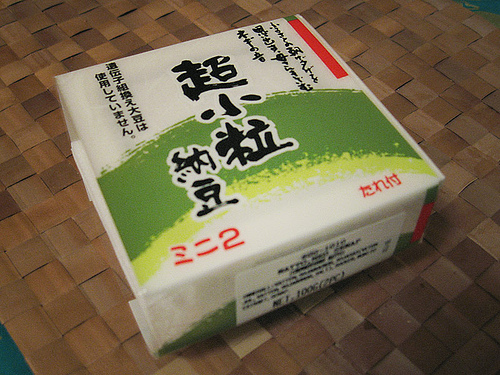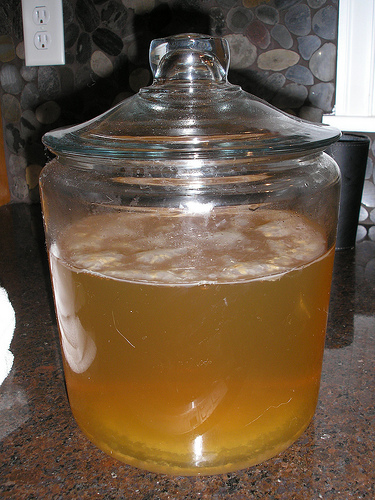As previously blogged, the evolutionary reason we like umami taste may be so that we’ll eat more bacteria-laden food. This makes sense only if bacteria-laden food would have been the main source of umami. Nowadays, you can get umami from MSG. What about before MSG?
The Umami Information Center sent me a free booklet called Umami The World — a better title than Umami: An Introduction. Umami taste is mainly supplied by glutamic acid, a protein building block. My assumption was that glutamic acid is usually a protein breakdown product. Bacteria feed on protein, leaving a pile of bricks — glutamic acid among them. Was this correct? Or could you get umami taste without bacteria?
You can, but in most cases you don’t. In Japanese cooking, a potent source of umami is konbu, a type of seaweed. Perhaps because konbu produces so much umami and so little else that umami was discovered by a Japanese scientist. Umami flavorings are used in many other cuisines but the source is usually fermented food. In many Asian countries, umami comes from fermented fish sauce and fermented bean products (e.g., miso, soy sauce). In Chinese cooking, umami comes from a condiment called jiang, which is made from fermented grain, meat, or fish. In Western cuisines, cured pork is often used as a flavoring agent. “The curing process liberates more of the glutamic acid content of the meat.” Curing takes place at room temperature, which means bacteria grow. “Much of the food of ancient Rome was routinely seasoned with a sauce [that] was made from salted fish, fermented and strained. . . The polar Eskimo people traditionally fermented a small portion of their harvest of fish.” Tomatoes and shitake mushrooms are non-fermented sources of umami.
A telling comment in the book is that umami usually comes from sauces (e.g., fish sauce) or liquids (e.g., dashi, bouillion). Cooks use sauces and liquids to add what is missing. The presence of umami in so many sauces — as if sauces have been devised or selected to be high in umami — suggests that ordinary foods don’t have much umami. A table of glutamate concentration says that parmesan cheese has 1700 mg/100 g whereas several vegetables — tomatoes (246 mg/100 g), green pea (106), onion (51), spinach (48), potato (10) — and meats — beef (10), chicken (22), pork (9) — have much less.
The breakdown process I imagined is spelled out: “During the ripening of cheese, proteins are broken down progressively into smaller polypeptides and individual amino acids. Large increases in free amino acid content also occur during the curing of ham.” Surely the same will be true during room temperature aging of any protein source. Beef is routinely aged at room temperature for about a week to give it a “meaty” flavor (not from the umami book but from here).


